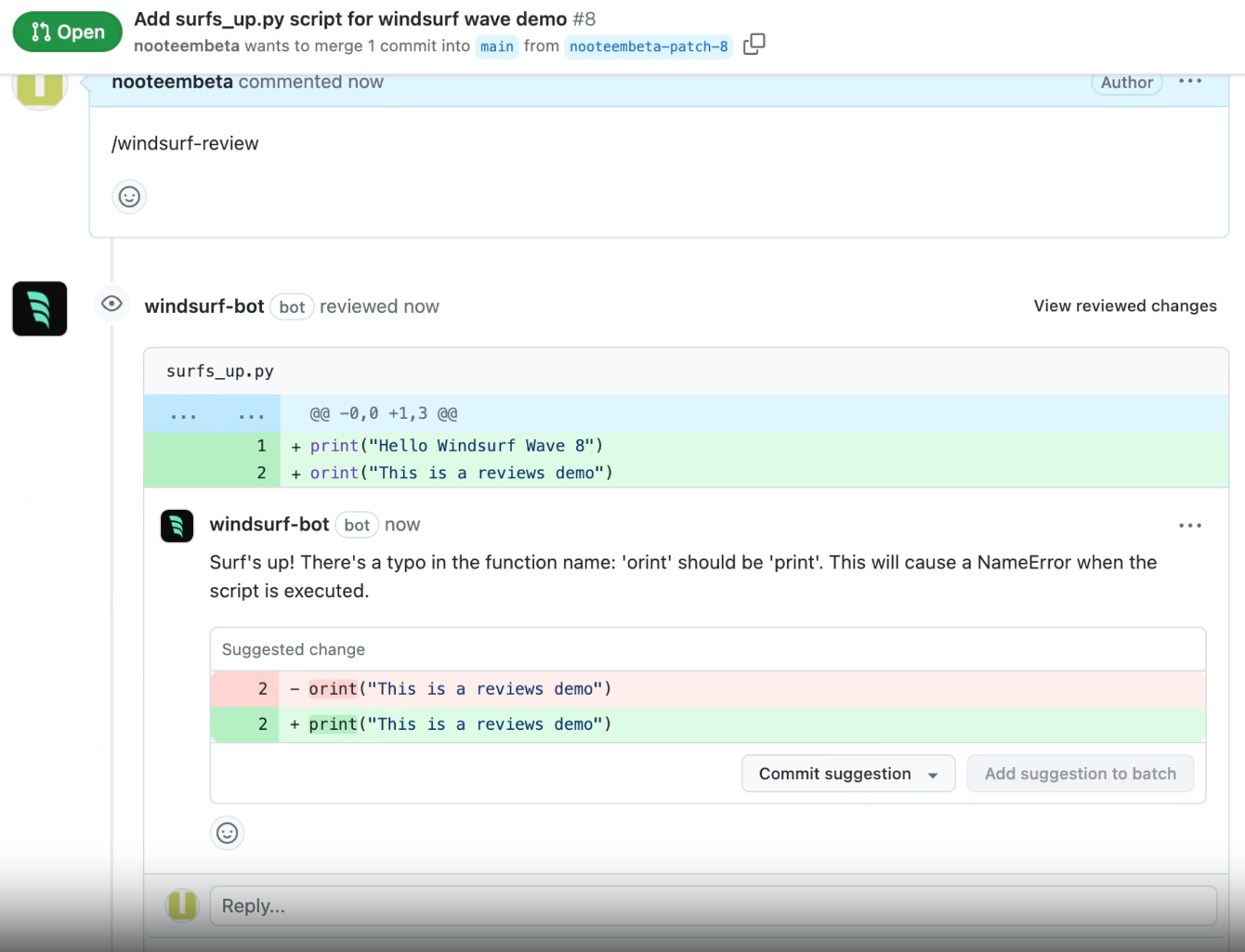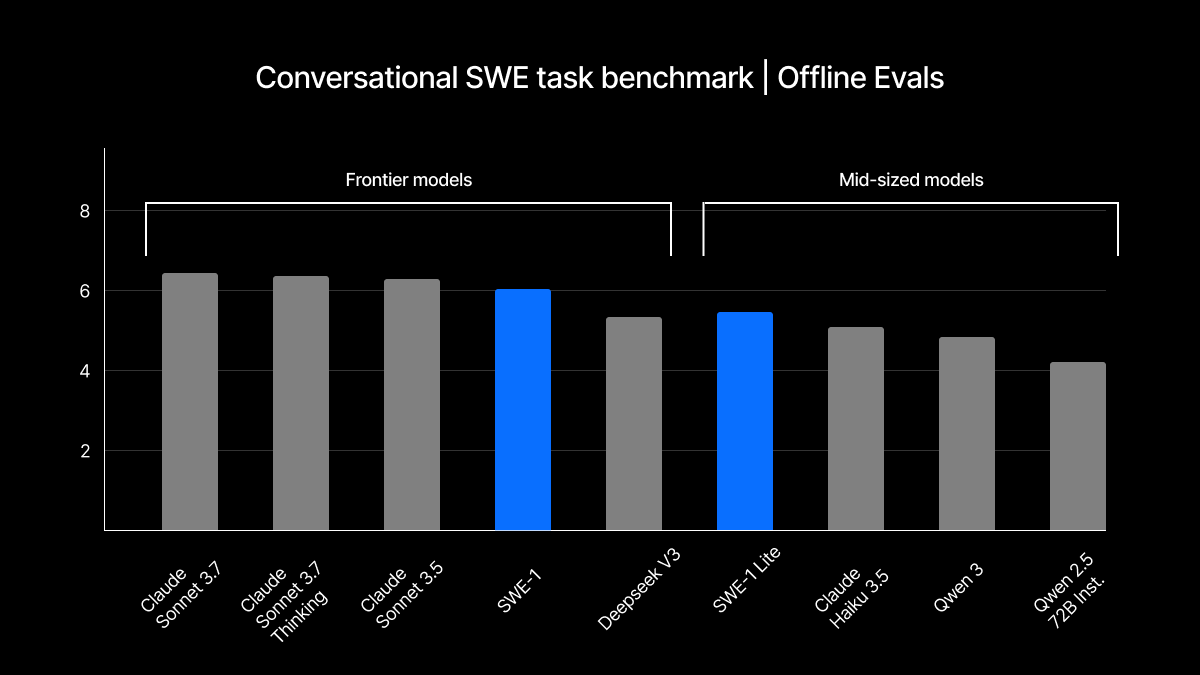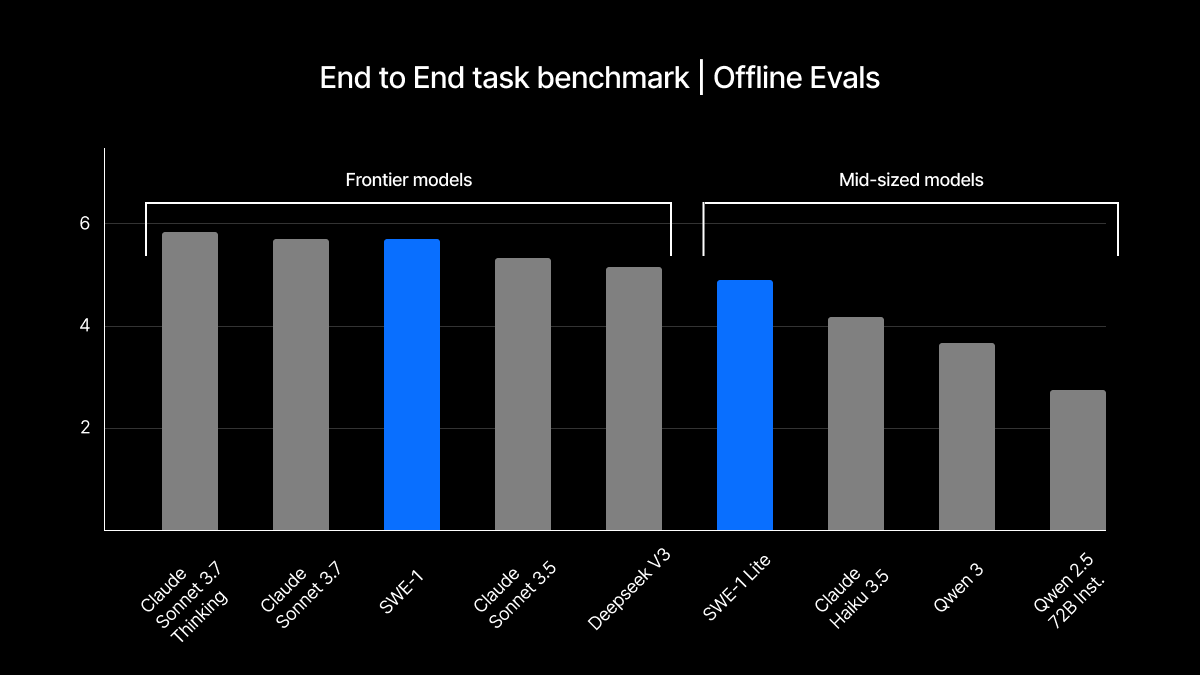GitHub Copilot, Windsurf, and Cursor: supporting SDLC tasks
After a long break, we are excited to bring you the latest in AI news. EPAM AI SDLC experts regularly prepare the Applied AI Digest. Here is the latest edition we are thrilled to share with you.
This digest was prepared by:
- Alex Zalesov, Systems Architect
- Aliaksandr Paklonski, Director of Technology Solutions
- Tatsiana Hmyrak, Director of Technology Solutions
.webp)
This issue of Applied AI Digest highlights a significant shift in AI development tools: moving beyond simple code generation to supporting a broader range of tasks across the software delivery lifecycle (SDLC).
- GitHub Copilot now offers Spaces for team knowledge sharing, enhanced automated code reviews, and an upgraded GPT-4o model.
- Windsurf introduces automated pull request reviews, file-based rules for enforcing standards, customizable workflows, and new SWE-1 models tailored for software engineering.
- Cursor adds multi-file change suggestions, background agent support for parallel task execution, and multi-root workspace capabilities.
These updates collectively reflect the growing evolution of AI systems towards addressing key aspects of code review, collaboration, automation, and standards enforcement throughout the SDLC.
GitHub Copilot
1. Centralized project knowledge with Copilot Spaces

GitHub has launched Copilot Spaces, an AI-powered collaborative workspace that lets teams centralize project context — including code, documentation, specs, and custom instructions — to deliver more relevant AI assistance.
Users can upload custom information such as chat transcripts, documentation, or FAQs, enabling Copilot to answer questions grounded in this curated context. Spaces transform Copilot into a subject matter expert by leveraging specific project knowledge, and organization-level spaces can be shared to scale expertise across teams.
Files and repositories added to spaces are kept up to date automatically. Copilot Spaces is available to all Copilot users, with organization admin opt-in required for business and enterprise customers. Starting June 4, 2025, usage will follow the Copilot Chat billing model, with premium requests consuming one request each for Pro, Business, and Enterprise subscribers.
2. Code review: expanded coverage and developer control
GitHub Copilot expands its code review capabilities with enhanced coverage across more file types and improved developer control. A new personal user setting allows Copilot Pro and Pro Plus developers to opt in to automatic code reviews on their own pull requests, complementing existing repository-level configurations for greater workflow flexibility.
Copilot now generates 80% more comments per pull request, with improved quality and organization to make feedback easier to understand and act on. Review coverage has been broadened to include code quality, correctness, clarity and style, robustness, and accessibility. The code review feature now supports over 900 programming languages, making it accessible to teams working across diverse technology stacks.
[Source: https://github.blog/changelog/2025-05-28-copilot-code-review-better-coverage-and-more-control]
3. Code completion now uses upgraded GPT-4o model
GitHub Copilot now uses an upgraded GPT-4o model for all code completion users, delivering improved code generation with a knowledge cutoff of March 2025. The update is available immediately for all Copilot users without additional setup.
[Source: https://github.blog/changelog/2025-05-27-gpt-4o-copilot-may-update]
Windsurf
1. Automated PR reviews

Windsurf has launched Reviews, a GitHub app that leverages AI to automatically review pull requests, providing analysis and actionable feedback to streamline code review workflows. The app can generate pull request titles and descriptions based on the code diff and project context, reducing manual effort for developers and improving the clarity of submissions.
Data retention is required on the Windsurf side, with explicit opt-in from users. Retained data includes basic telemetry for review comments, such as timestamps, repository names, GitHub usernames of PR authors, comment IDs, reaction counts, and the status of suggested commits. Teams can enforce consistent code quality standards by configuring centralized rules, ensuring that reviews align with organizational guidelines. At launch, Windsurf Reviews supports only GitHub repositories.
For now, Windsurf Reviews is free to use, but there are limits on the number of reviews per month and a maximum size restriction for the diff that can be processed.
[Source: https://windsurf.com/blog/windsurf-wave-8-teams-and-enterprise]
2. Creating reusable development workflows with slash commands

Windsurf now supports custom workflows that automate repetitive development tasks through slash command activation. Teams can define these workflows using markdown files, which are stored in the .windsurf/workflows directory and checked into version control for team-wide standardization. This approach enables the creation of reusable automation patterns for common development processes, ensuring consistency and efficiency across team members.
Cascade, Windsurf’s AI agent, can generate workflows directly from conversations, allowing teams to capture and formalize best practices as prompts saved in markdown files. Once defined, these workflows can be triggered by referencing the corresponding slash command, eliminating the need to retype prompts for routine tasks. Because workflows are stored in the repository, they can be easily shared and maintained by all team members, supporting collaborative development and process improvement.
[Source: https://windsurf.com/blog/windsurf-wave-8-cascade-customization-features]
3. Define team coding standards in markdown files

Windsurf introduces file-based rules that enable teams to apply targeted feedback and development standards to specific files or folders using markdown rule files. These rules are stored in the .windsurf/rules directory and offer flexible activation modes, including manual invocation, always-on enforcement, model-driven application based on descriptive criteria, and glob pattern matching for subdirectory targeting. This approach allows organizations to define and enforce coding standards, preferred libraries, and best practices with precision across their codebase not only for humans, but also for AI coding agents.
Rules and workflows are designed to be complementary: rules provide a mechanism for specifying general standards and best practices without repeating them in every workflow, while workflows structure a series of actions for more complex automation. By separating standards from process automation, Windsurf enables enterprise teams to maintain consistency and efficiency in large-scale development environments. This feature is particularly valuable for teams seeking to codify and automate adherence to organizational guidelines and technical preferences.
[Source: https://windsurf.com/blog/windsurf-wave-8-cascade-customization-features]
4. Run multiple Cascade agents in parallel
Support for running Cascade agents in the background has been introduced, allowing multiple agents to operate in parallel. Users receive notifications when an agent requires input, such as approving terminal commands.
[Source: https://windsurf.com/blog/windsurf-wave-8-cascade-customization-features]
5. Memories, Rules, and MCP now available in JetBrains plugin
Windsurf has expanded the JetBrains plugin with Memories, Rules, and MCP support, building on its initial feature set to provide more advanced AI-powered development assistance. The plugin now incorporates the original .windsurfrules implementation, enabling teams to apply file-based rules for tailored feedback and standards directly within JetBrains IDEs. This approach is different from the newer Rules system available in the Windsurf editor.
The Memories feature allows Cascade to learn from conversations and retain important information for future retrieval, enhancing the agent’s contextual awareness and long-term utility. Additionally, the plugin can connect to locally-running MCP servers, enabling agents to pull context from arbitrary data sources. While the JetBrains plugin provides substantial AI-powered assistance, some advanced capabilities offered in the standalone Windsurf editor are not yet available in the plugin.
[Source: https://windsurf.com/blog/windsurf-wave-8-ux-features-and-plugins]
6. Announcing the SWE-1 software engineering models

Windsurf has released SWE-1, a set of AI models focused on software engineering tasks. The main SWE-1 model offers tool-call reasoning comparable to Claude 3.5 Sonnet but is less expensive to operate. For a limited time, all paid users can access SWE-1 at no credit cost per prompt.
SWE-1-lite, a smaller variant, replaces Cascade Base and provides better quality. It is available for unlimited use to all users, including those on free plans. SWE-1-mini is a fast, compact model that powers the Windsurf Tab passive experience and is also available to all users.
These models are designed to improve tool-calling accuracy, maintain focus during long agentic workflows, and are tuned for the Cascade workflow with human-in-the-loop coding.
Windsurf has identified two representative software engineering tasks to benchmark the real-world effectiveness of AI coding agents: the Conversational SWE Task Benchmark and the End-to-End SWE Task Benchmark. The Conversational benchmark evaluates how well an agent, such as Cascade, can pick up and advance a half-finished task in the middle of an ongoing session — reflecting the human-in-the-loop, collaborative coding scenarios common in enterprise development. The End-to-End benchmark measures the agent’s ability to solve a task independently from scratch, as validated by passing a set of unit tests, highlighting the growing importance of fully autonomous workflows.
Windsurf used these benchmarks to compare the performance of their previous Frontier model with the new SWE-1 family of software engineering models. This evaluation demonstrates Windsurf’s focus on practical, workflow-driven benchmarks that mirror how enterprise teams actually use AI agents in coding environments.

Cursor
1. Max Mode pricing simplified for all models
Max Mode expands context size to 1 million tokens and supports up to 200 tool calls. Usage is billed per token at the API provider’s rate plus a 20% Cursor premium.
[Source: https://docs.cursor.com/context/max-mode]
2. Tab suggestions across multiple files

Cursor’s new Tab model now supports suggesting changes across multiple files, enabling more effective refactoring, edit chains, and coordinated updates in related code. The update also introduces syntax highlighting in completion of suggestions for improved readability and usability.
[Source: https://www.cursor.com/changelog]
3. Introducing autonomous agent

Cursor now supports running autonomous agents in remote environments, enabling end-to-end task execution without direct user intervention. To use this feature, users must first configure the environment, specifying the machine on which the agents operate. This setup requires more relaxed security than the default Cursor environment. Privacy mode must be disabled, allowing Cursor to use user prompts and environment descriptions to improve the product.
Users must grant the agent read and write access to their GitHub repository so it can read code and create pull requests. The agent clones the project into an AWS machine managed by Anysphere, the company behind Cursor. Any secrets used to provide the environment are stored in Anysphere’s database.
There are no restrictions on the commands the agent can execute; any command generated by the language model will run in the container with full access to the codebase. Due to these security considerations, I recommend this feature only for testing with open repositories and is not for enterprise use. Enterprise readiness will depend on the ability to run autonomous agents within customer-managed environments, ensuring code does not leave the organization’s perimeter.
[Source: https://docs.cursor.com/background-agent]
4. Managing multiple codebases in a single workspace

Cursor now supports multi-root workspaces, letting you index and work with multiple codebases at once in the same environment. This is useful for solutions made up of several projects, such as a frontend and backend, or an API service and its supporting library. With this feature, you can make coordinated changes across multiple projects within a single agent session.
[Source: https://www.cursor.com/changelog]

_(1).png)
.png)